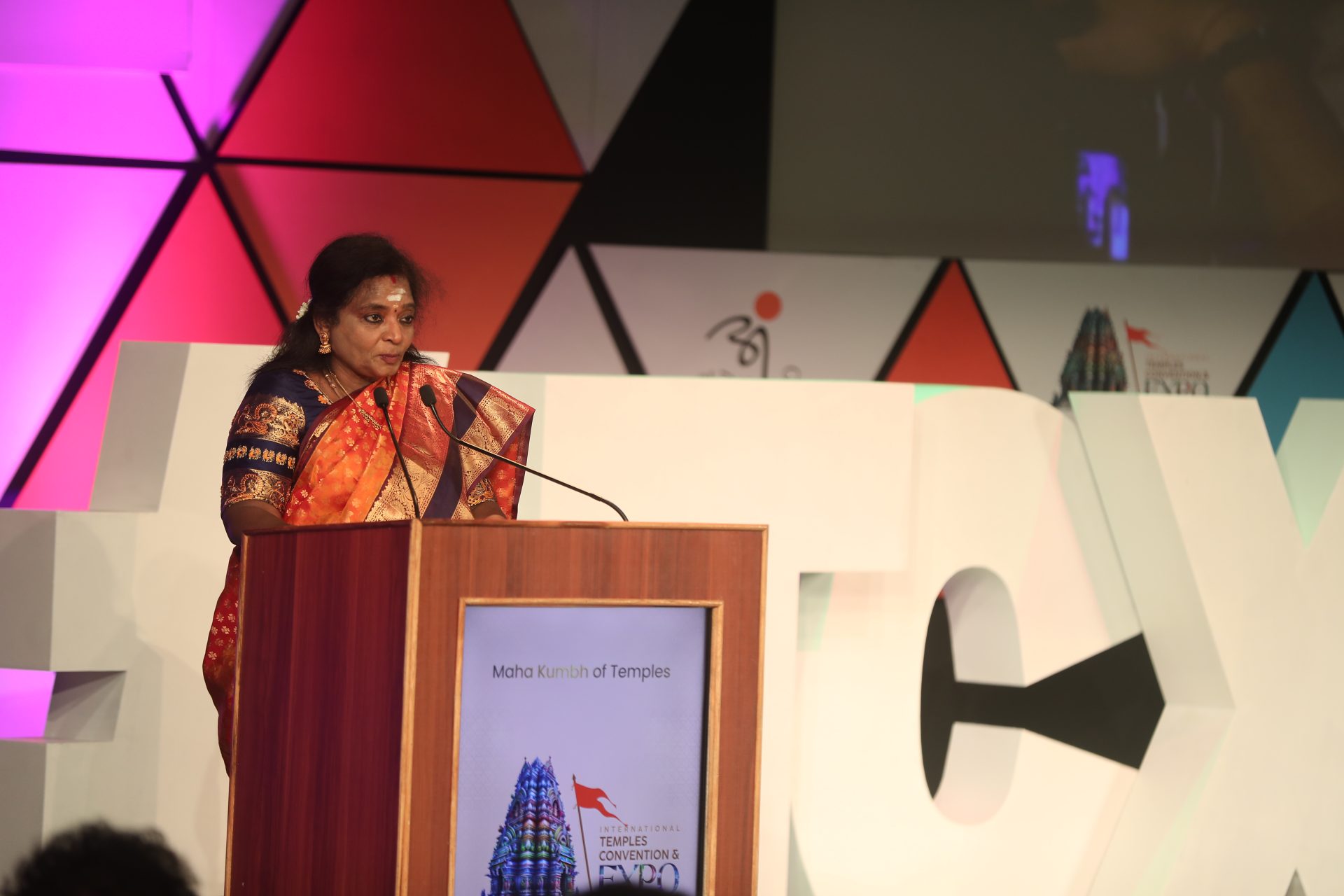Tamilisai ji, with her characteristic eloquence, began by acknowledging the cultural and spiritual synergy between the North and South of India. She highlighted the deep connection between Rameshwaram and Kashi, two of the most revered spiritual destinations in the country. These two sacred cities, she pointed out, are not just geographical locations but spiritual anchors that bind the nation together. Whether you start your pilgrimage in the South and end in the North, or vice versa, the journey is a testament to the unity that temples foster across regions.
In an era where modernization often overshadows tradition, Tamilisai ji emphasized the critical role temples play in preserving and promoting our cultural heritage. Temples, she said, are much more than places of worship. They are the soul of our country—the Atma of Bharat. From economic sustenance to cultural preservation, temples are intertwined with every aspect of life. She spoke passionately about the vibrant temple economy, where even the simplest of activities, like buying a garland or lighting a camphor, contribute to the local economy, sustaining small businesses and fostering a sense of community.
But the influence of temples goes beyond economics. Tamilisai ji reminded the audience that temples are the custodians of culture, literature, and social justice. Drawing from her Tamil roots, she narrated how ancient Tamil literature was intrinsically linked with temple rituals. The famous Sangam literature, she explained, was once judged by its ability to float on the sacred temple pond, symbolizing the intersection of spirituality and intellectual pursuit.
Tamilisai ji also touched on the health benefits of temple traditions. The sprawling corridors of Tamil Nadu’s temples, she noted, serve as natural health tracks. Walking through these corridors thrice is not just a spiritual ritual but a practical exercise that keeps ailments like diabetes and high blood pressure at bay. This is where spirituality meets well-being, reinforcing the idea that temples are guardians of not just the soul, but the body as well.
One of the most poignant moments of her speech was when she recounted the story of an atheist leader in Tamil Nadu, whose very name—Ramasamy—ironically reflected the inescapable connection to Lord Rama, despite his anti-Hindu stance. This, she said, is the power of spirituality in India. No matter how hard one tries, the connection to our gods, our temples, and our culture is unbreakable. It’s in our names, our rituals, and our daily lives.
Tamilisai ji didn’t just focus on the past; she also highlighted the global reach of Indian spirituality. From Muruga temples in Canada to ISKCON centers in distant lands, Indian temples are now global icons of peace and spirituality. She recalled her visit to temples in Canada during her training in fetal therapy, illustrating how Indian spirituality transcends borders and connects the Indian diaspora to their roots.
As she brought her speech to a close, Tamilisai ji left the audience with a powerful message. Temples are not just structures of stone and mortar; they are living entities that embody the spirit of India. They are places where culture, economy, health, and spirituality converge. They are places of social justice, where even the most marginalized find a place to connect with the divine.
The Governor’s invitation to bring the ITCX to Telangana, Puducherry, and Tamil Nadu was not just a formality. It was a call to action—a call to continue the work of connecting temples, preserving culture, and fostering unity in diversity. It was a reminder that in the fast-paced world of today, our temples remain steadfast, grounding us in our roots while guiding us into the future.
Smt. Tamilisai Soundararajan’s address was more than a speech—it was a clarion call to recognize, cherish, and uphold the unbreakable bonds that temples weave across the fabric of India. From Rameshwaram to Kashi, these bonds are the lifeline of our cultural and spiritual identity, uniting us as one nation under the timeless shade of divinity.


